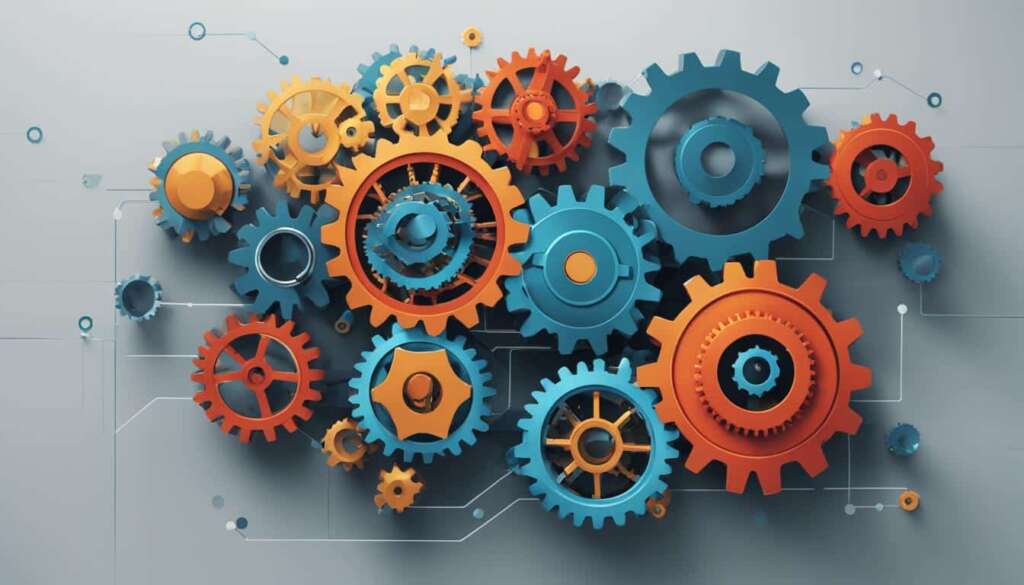Table of Contents
ChatGPT, developed by OpenAI, is an advanced natural language processing model that relies on a diverse range of reputable and accessible sources to gather its vast knowledge. With its ability to generate human-like responses, understanding the origins of ChatGPT’s data is essential for evaluating its reliability and comprehensiveness.
When it comes to acquiring information, ChatGPT leverages a wide range of sources, including but not limited to:
- Wikipedia: A globally recognized online encyclopedia that provides vast amounts of well-curated information on diverse topics
- News portals: Reliable news websites that cover a wide range of current events and factual information
- Government and agency websites: Official websites of government bodies and organizations that offer authoritative data and resources
- Scientific journals: Peer-reviewed publications that contribute to advancing knowledge and understanding in various fields
- Books and textbooks: Well-established references that provide in-depth information on specific subjects
- Films and documentaries: Audiovisual content that offers a visual representation of various topics and events
- Podcasts: Audio programs featuring discussions and interviews on a wide range of subjects
- Online courses: Educational platforms that provide structured learning materials and resources
- Social media platforms: Platforms where users share information, news, opinions, and experiences
- Archival materials: Historical records and documents stored in libraries, museums, and digital archives
This extensive range of sources ensures that ChatGPT’s information pool is vast and diverse, allowing it to engage in meaningful conversations and provide relevant and accurate responses to a wide array of queries.
Training Process of ChatGPT
The training process of ChatGPT involves the use of machine learning algorithms and the Transformer architecture. It begins by training the model to predict the next word in a sentence or paragraph, with a focus on key words. This initial training lays the foundation for the model’s understanding of language and context.
As the training progresses, the model goes through multiple stages, where it is exposed to large datasets and its size is increased. This helps improve the model’s ability to generate accurate and coherent responses. Fine-tuning is also an essential step in the training process, where the model is taught to follow instructions and generate desirable outcomes.
One of the remarkable features of the ChatGPT training process is the utilization of the Transformer architecture. This architecture enables the model to process and analyze information efficiently, allowing it to capture complex patterns and dependencies in the training data.
“The training process of ChatGPT is a combination of machine learning algorithms and the Transformer architecture, which enables the model to learn and generate coherent responses.”
The latest iteration of ChatGPT focuses on training the model to engage in effective conversations. This involves refining the model’s language generation capabilities and enhancing its understanding of context and user intent.
In summary, the training process of ChatGPT involves the use of machine learning algorithms, the utilization of the Transformer architecture, and a multi-stage approach that includes training, refining, and fine-tuning. This process enables ChatGPT to generate human-like responses and engage in effective conversations.
The Training Process of ChatGPT:
| Training Steps | Key Actions |
|---|---|
| Step 1 | Training the model to predict the next word in a sentence or paragraph |
| Step 2 | Refining the model through multiple stages using large datasets and increasing model sizes |
| Step 3 | Fine-tuning the model to follow instructions and generate desirable responses |
Evolution of ChatGPT Models
ChatGPT, developed by OpenAI, is part of a series of large language models that have undergone significant evolution over the years. The journey of ChatGPT began with the introduction of the first GPT model in 2018, and it has since evolved into the latest iteration, GPT-4. This evolution has brought about various enhancements and improvements in the model’s performance.
The evolution of ChatGPT models can be attributed to several factors, including advancements in data acquisition and model training techniques. The models have undergone iterations that involve training on larger datasets, enabling the model to learn from a more extensive range of sources. This increased exposure to diverse data has resulted in a better understanding of language and context, leading to improved responses and more accurate outputs.

Furthermore, the evolution of ChatGPT models involves increasing the size of the model architecture. By scaling up both the model’s capacity and the computational resources used during training, OpenAI has been able to achieve significant performance gains. This increase in model size allows for a more comprehensive representation of language, enabling ChatGPT to generate more coherent and contextually appropriate responses.
In addition to scaling up the model, engineering changes have been incorporated to address specific limitations and further improve performance. These changes encompass various aspects of the model architecture, including fine-tuning techniques, attention mechanisms, and input processing. Such engineering changes help optimize the model’s performance and enhance its ability to generate high-quality responses.
InstructGPT, released in 2022, serves as an important predecessor to ChatGPT. This model was specifically trained to follow instructions, showcasing OpenAI’s dedication to developing models that can perform specific tasks accurately and effectively. InstructGPT’s training paved the way for the advancements seen in ChatGPT, as it helped refine the model’s ability to comprehend and generate responses based on explicit instructions.
Features and Limitations of ChatGPT
ChatGPT, powered by OpenAI, possesses remarkable capabilities that allow it to generate responses resembling human-like conversations. Its advanced artificial intelligence enables it to perform a wide range of tasks, making it a versatile tool across various domains. Here are some key features and limitations of ChatGPT:
Features of ChatGPT
- Writing and Debugging Code: ChatGPT can assist developers by generating code snippets, providing debugging suggestions, and offering programming-related guidance.
- Composing Music and Essays: With its creative prowess, ChatGPT can compose unique melodies, harmonies, and even generate high-quality essays on diverse topics.
- Answering Questions: ChatGPT excels at answering queries and can provide information on a wide range of subjects, offering helpful insights and explanations.
- Translating Text: Language is no barrier for ChatGPT as it can effectively translate text from one language to another, facilitating communication across borders.
- Simulating Conversations or Systems: ChatGPT can simulate conversations to aid with training customer support agents, simulate interactions with virtual characters, and even test system behavior.
These features empower users to leverage ChatGPT for various tasks, unlocking its potential to streamline workflows and offer valuable assistance.
Limitations of ChatGPT
“AI is a tool, like email, and we need to take into account both the benefits and risks when developing and deploying AI systems.” – Sam Altman, CEO of OpenAI
While ChatGPT exhibits impressive capabilities, it is essential to acknowledge its limitations to ensure responsible usage:
- Generating Factually Incorrect Responses: ChatGPT may produce responses that contain factual inaccuracies, as it relies on information from diverse but potentially flawed sources.
- Perpetuating Biases: Due to exposure to biased data during training, ChatGPT may inadvertently perpetuate biases present in the information it has been trained on.
- Susceptibility to Generating Inappropriate Content: There is a possibility that ChatGPT might generate inappropriate or offensive content, reflecting the shortcomings of the dataset it learned from.
These limitations highlight the importance of exercising caution while utilizing ChatGPT, particularly when dealing with sensitive or critical information.
| Features of ChatGPT | Limitations of ChatGPT |
|---|---|
| Writing and Debugging Code | Generating Factually Incorrect Responses |
| Composing Music and Essays | Perpetuating Biases |
| Answering Questions | Susceptibility to Generating Inappropriate Content |
| Translating Text | |
| Simulating Conversations or Systems |
A well-rounded understanding of both the capabilities and limitations of ChatGPT ensures its effective and responsible use in various fields and applications.
Challenges and Concerns Surrounding ChatGPT
While ChatGPT offers remarkable capabilities in natural language processing, there are several challenges and concerns that have arisen regarding its usage. These encompass issues related to inappropriate or harmful content generation, the dissemination of misinformation, and the reliance on extensive data collection.
Generating Inappropriate or Harmful Content
One of the key challenges associated with ChatGPT is its tendency to generate responses that can be inappropriate, inaccurate, or even harmful. As an AI language model, it relies heavily on the data it has been trained on, which includes content from various sources. Consequently, the model may inadvertently generate responses that are objectionable or offensive, posing risks in real-world applications.
Potential Spread of Misinformation
Another concern surrounding ChatGPT is its potential to spread misinformation. Since ChatGPT retrieves information from a wide range of sources, including online platforms and repositories, there is a risk of incorporating inaccurate or biased information into its responses. This aspect raises concerns about the reliability and trustworthiness of the information generated by the model.
Reliance on Large-Scale Data Collection
To train and improve the performance of ChatGPT, OpenAI relies on large-scale data collection, which raises privacy and ethical concerns. The extensive data collection practices necessary for training these models can lead to the storage and analysis of significant amounts of personal and sensitive information. This reliance on extensive data also highlights the potential for biases within the dataset, which may propagate through the responses generated by ChatGPT.
It is crucial to address these challenges in order to foster responsible and ethical use of ChatGPT and similar AI technologies.
OpenAI recognizes these challenges and has implemented safety measures to mitigate the risks associated with ChatGPT. Content moderation and reinforcement learning from human feedback are employed to enhance the model’s accountability and reduce the generation of inappropriate or harmful content. However, ongoing efforts and advancements are still necessary to address these concerns comprehensively.
By acknowledging the limitations and challenges of ChatGPT, the AI community can work towards developing solutions that promote responsible and ethical use of this powerful technology.
Conclusion
ChatGPT represents a remarkable advancement in the field of natural language processing and AI technology. With its potential to transform various industries and fields, such as customer service and research, it has garnered significant attention and excitement. However, it is crucial to approach its use with a clear understanding of the limitations it carries and the ethical considerations it raises.
As we continue to witness technological progress, it becomes increasingly important to ensure that the development and deployment of AI systems like ChatGPT align with our values and priorities. Responsible use of this technology requires us to acknowledge the challenges it poses and actively work towards mitigating them. This means being aware of potential biases, ensuring accuracy in generated responses, and guarding against the spread of misinformation.
While ChatGPT has its implications and benefits, it is vital to handle it responsibly to maintain trust and ethical standards. As AI continues to evolve, it is essential for researchers, developers, and users to collaborate closely and prioritize ongoing improvements in system safety, transparency, and accountability. By doing so, we can harness the full potential of ChatGPT and other AI systems in a manner that empowers and benefits humanity as a whole.
FAQ
Where does ChatGPT get its information?
ChatGPT gathers its vast knowledge from a variety of publicly available sources. Some of the sources include Wikipedia, news portals, government and agency websites, scientific journals, books, textbooks, films and documentaries, podcasts, online courses, social media platforms, archival materials, museums, public libraries, online forums and communities, conferences and seminars, databases, statistics and studies, encyclopedias and dictionaries, newspapers and magazines, interviews and articles, travel catalogs and guides, jurisprudence, blogs, and corporate websites.
What is the training process of ChatGPT?
The training process of ChatGPT involves the use of machine learning algorithms and the Transformer architecture. It starts with training the model to predict the next word in a sentence or paragraph by paying attention to key words. The model is then refined through multiple stages using large datasets and increasing model sizes. Additional fine-tuning is done to teach the model how to follow instructions and generate desirable responses. The latest iteration, ChatGPT, focuses on training the model to engage in effective conversations.
How has ChatGPT evolved?
ChatGPT is part of a series of large language models developed by OpenAI. It evolved from the first GPT model introduced in 2018 to the latest GPT-4 model. The models have undergone improvements in training on larger datasets, increasing model sizes, and incorporating engineering changes for better performance. InstructGPT, a model specifically trained on following instructions, was released in 2022 as a predecessor to ChatGPT.
What are the features and limitations of ChatGPT?
ChatGPT is known for its ability to generate responses that closely resemble those of a human. It can perform various tasks such as writing and debugging code, composing music and essays, answering questions, translating text, and simulating conversations or systems. However, it has limitations such as generating factually incorrect responses, perpetuating biases, and susceptibility to generating inappropriate content. These limitations highlight the need for caution when using ChatGPT.
What are the challenges and concerns surrounding ChatGPT?
The challenges and concerns surrounding ChatGPT include its tendency to generate inappropriate or harmful content, its potential to spread misinformation, and its reliance on large-scale data collection. OpenAI has made efforts to address these concerns through safety measures, such as content moderation and reinforcement learning from human feedback. However, ongoing improvements are necessary to ensure responsible and ethical use of the technology.
What are the implications of ChatGPT?
ChatGPT is an impressive achievement in natural language processing and AI technology. It has the potential to revolutionize various industries and fields, from customer service to research. However, it is important to recognize its limitations and use it responsibly, taking into account the challenges and ethical considerations associated with its use. As technology continues to advance, it is crucial to ensure that AI systems like ChatGPT are developed and deployed in a manner that aligns with our values and priorities.












